
Golf ball technology has come a long way throughout the history of the game. From early materials including wood, leather, feathers, tree sap and rubber, to space-age materials including synthetic polymers and urethane, the ball has undergone a dramatic transformation throughout the centuries.
THE PAST
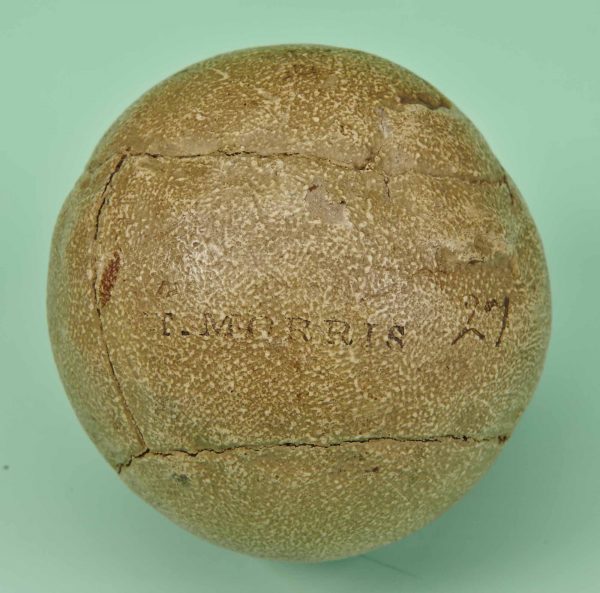
Though no-one knows what the inventors of the game actually hit, the first recognised balls were made of wood in the early 17th century. These eventually gave way to the Featherie Ball, which was a hand-sewn leather pouch stuffed with a significant amount of feathers. The ball was then boiled and put in a cowhide bag. As it cooled, the feathers expanded while the hide shrank, resulting in a compact and solid ball. Though they flew better than wooden balls, they far from perfectly round and they had a tendency to fly irregularly. Like the clubs of the day, the featherie also had issues in wet weather (the stitches would rot) and the ball could split when hitting hard surfaces. They were also not cheap. Each ball would sell for between 2 and 5 shillings — which is the equivalent of $8 to $17 today!
The featherie was the ball of choice for over 200 years until the gutta-percha ball was invented in 1848. Created from the dried sap of a Sapodilla Tree, it was cheaper to make, had a rubbery feel and could be shaped by heat. Interestingly, ballmakers soon discovered (by accident) that little nicks and scrapes actually improved flight characteristics of the ball – and thus they began to intentionally hammer little dimpled patterns into the ball (thus the dimpled ball was born).
The 20th century saw the rise of multi-layer balls. The first examples had liquid or solid cores surrounded by rubbery strings (that were the fascination of many a young schoolboy when cut open with their father’s circular saw). Softer, rubber covers (as well as the Urethane cover introduced in the early 2000s) allowed manufacturers to achieve great advancements in feel, distance and spin. This was a real turning point for the game, as the later advancements in ball design would begin to affect club design (e.g. clubhead grooves) as well as course design (increased course length).
THE PRESENT
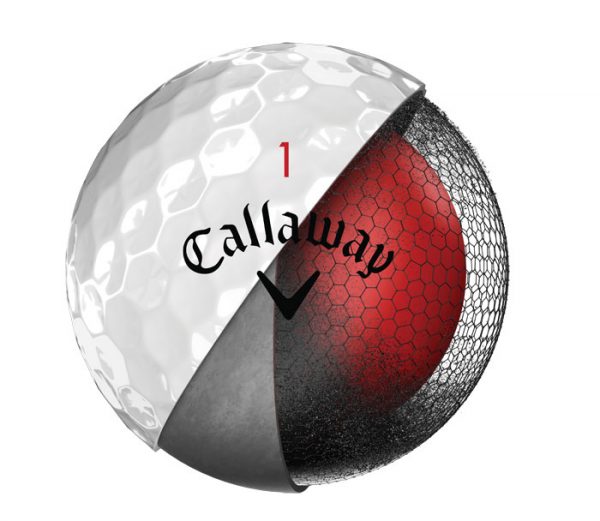
Today, modern balls generally consist of several layers of synthetic materials, like urethane blends. They vary from two-piece to five-piece balls, offer a variety of distance versus feel characteristics and come in a variety of colours from white to pink to nuclear yellow.
With such a huge variety of choices now available, today’s golfer has more options than ever before to find a golf ball that is precisely suited to their particular game. To the average golfer, however, the surplus of alternatives may feel daunting and confusing.
So what is the difference between all these balls? How do you choose? And what’s in store for the future? In order to help golfers navigate the quagmire of selections, we reached out to some of the industry’s top golf ball experts and engineers to help shed some light on the subject.
Inside Golf: Golf balls have made huge advancements over the last decade (or two). What do you believe is the key discovery or advancement in this regard?
Dave Bartels, Senior Director Golf Ball R&D, Callaway: “Material innovation over the past decade has allowed us to make huge advancements in the performance of golf balls. In particular, they have allowed us to develop soft feeling golf balls that don’t sacrifice the all-around performance that soft balls did a decade ago.”
Norikazu Ninomiya, Golf Ball Engineer – Mizuno Japan. “The cover of the golf ball has been the key. From the original Balata cover, the Surlyn cover delivers distance, but feel is sacrificed (and while the cover can be made soft, it then sacrifices distance). With the Urethane cover, distance and feel are achieved.
Dean Klatt, Founder and CEO, Seed Golf Balls: “There’s been several, but the really ‘big’ jump in performance came with the introduction of the 3-piece solid core design combined with a Urethane cover. That was the game-changer, and gave the ball the length of a ‘rock’ with the feel and control of balata, but without the durability issues. Spalding kicked that off with the Tour Edition and the Zinthane cover in the late 80s, but Titleist perfected it. The rest of us have been playing catch-up ever since. Since then, improving aerodynamic performance (i.e. dimple design) has also helped with the accuracy story, particularly with a more stable ball flight.”
Keiji Ohama, Manager of Product Development Department, Sumitomo Rubber Industries (Parent Company of Srixon Sports Australasia). “New technologies have been constantly developed to enhance a golf ball’s performance. If you ask us to choose the most important one, it is the advancement in the material technology of the urethane cover, a key technology that drove the shift from wound balls to solid balls. In addition, progress in the designing of dimple patterns to deliver better aerodynamic performance, and the coating material technology to realise optimal spin control, have also contributed to the significant improvement of the performance of golf balls.”
Brad Kim, International Sales/Marketing manager. Volvik. “I would think there would be two major innovations right now. The first would be the stereotype that a golf ball must be glossed and white. Coloured balls/matte finished coloured balls have been gaining popularity for quite a few years now. After Volvik launched the initial matte finished coloured balls in the market, we could see many players from pros to amateurs changing the “colour” of their ball from the same plain white balls to colours they prefer. Not only do coloured balls give you a much better eye during their flight off the driver but it can be used to find your ball more easier as well. The second innovation would definitely be the discovery of urethane layered golf balls. Urethane material has a more flexible nature compared to Surlyns and it gives players a softer feel while they can create more spin around the green for better control as well.”
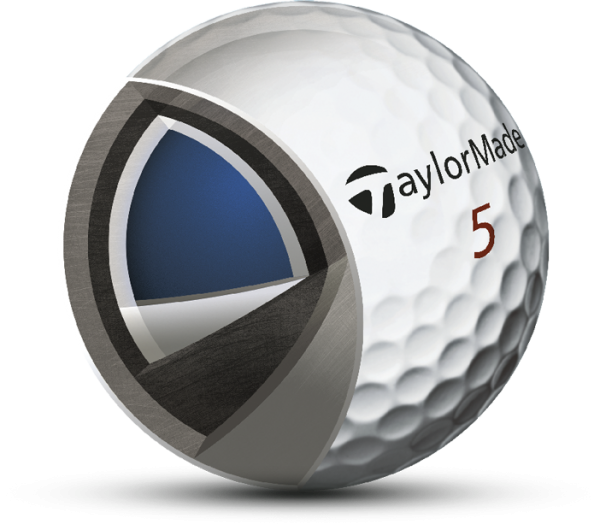
IG: Recently, it seems that the focus has gone away from “Distance”, in favour of more “Feel”. Have manufacturers reached a distance limit? Or is this simply targeting a “better control” aspect? Is this coming full-circle towards the “balata” ball of old?
Darryn Lowe, Product & Experiential Manager. TaylorMade Golf. “I feel that there is still distance out there to be had. TP5 and TP5X are a testament to this. Most balls in the market are at the speed limits set out by the USGA, but the shift for us has been about how the ball reacts off the face and through the air. The new 5-layer construction in TP5 and TP5X allowed us to create a ball that was fast, launched higher and spun less on longer shots which means distance and control was gained, while we still maintain our incredible greenside spin and control.”
Kim, Volvik: “The main reason I believe a more softer feel trend is coming is that manufacturers are trying to fulfil the needs of today’s consumers. The major group/age of golfers are older. Getting a year older means your swing is also getting a little slower than before. For example, if you had a swing of 100mph back in your day, you would have no problem ‘swinging for the fences’ with a four-layered urethane ball. However, once your swing decreases 10mph or so, you will definitely feel that the same ball you used to hit now feels much harder than it did during your younger days. Another reason is that the younger generation and amateurs are getting smarter and pickier than before. Several brands and several types of golf balls are now in the market and the young people/amateurs know they want to hit a ball that feels right to them and are well aware they don’t need to use a harder ball when they have so many options to choose from.”
Bartels, Callaway: “Our advancements in material innovation and our ability to manufacture those materials to dimensions previously thought impossible, have allowed us to design golf balls that deliver maximum distance performance at a very soft feel level. The firmer golf balls, particularly the lower-spinning variety, are already at the USGA distance limit given the nature of the test (120 mph driver head speed condition), but soft balls have the ability to capture more distance at the lower head speed conditions. Their construction also enables us to put an extremely soft cover on the surface, which equates to better control around the green while still keeping the low spin off the tee. Regarding the older ‘balata-type’ balls, I would say we’re NOT coming full circle because the soft balls of today are based on a different construction that reduces spin with longer club, while increasing spin around the green. I find that golfers who used to play the old balatas remember soft balls spinning a ton off the tee (due to the liquid centre core and rubber windings), which is opposite of today’s soft golf balls that use solid core, multi-layer technology to reduce spin on full shots.”
Ninomiya, Mizuno: “The golf ball is near the limit. The difference is close in achieving distance and performance but the consumer needs to decide which factor of the golf ball they are going to target – distance, feel, control or spin.”
Klatt, Seed: “The ‘feel’ movement is just marketing departments looking for a new angle to sell balls. Distance hit the theoretical limit back in the early 2000s, and there’s been no significant gain since then. The USGA regulations put paid to that, as they set the regulations all ball manufacturers, big or small, must adhere to. Exceed that performance line; it’s a non-conforming ball. So ‘more distance’ is no longer a valid marketing story, but ‘soft feel’ is as it potentially offers the golfer some sort of performance improvement. Whether there is a genuine improvement in golf balls due to lower compression and a subsequent softer feel is open to debate.”
Ohama, Srixon: “It is true that golf balls that give “soft feel” have become very popular in the last few years. Marketing research also shows that all golfers are focusing on “feel.” In fact, this is one of the key performance requirements that golfers have always expected from golf balls. At the same time, desire for longer distance and further improvement in golf ball performance is still strong among average golfers, which we believe we can achieve technologically. We are working hard every day to meet the demand of golfers, through the development of new construction and materials and the designing of dimple patterns, to deliver better aerodynamic performance.”
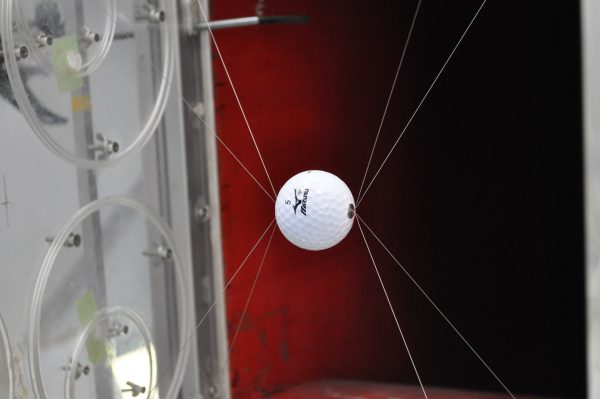
IG: Many manufacturers offer multiple balls under the same family. Two-layer, three-layer, four-layer… Some are labelled “Tour”, while others may have an X in the name. Some offer a “Distance with Feel” model or a “Feel with distance” model. It is proving confusing to many golfers. So what is the difference, and how do the different layers work together?
Klatt, Seed: “For a modern three (or four) piece ‘Tour’ ball, the core acts as the engine, which provides the explosive power that creates distance. This controls launch velocity and ball speed off the clubface, and distance. The mantle layer sits in between the cover and the core, and works with both layers to improve control. So this is the layer that impacts the spin you’ll get around the greens and with your irons, and helps to optimise ball flight… in essence controlling that power created from the core. The cover works with the mantle to provide the softer feel also. In a four-piece there’s another layer to help control the spin and ball flight a little more, particularly for higher swing speeds and launch angles. For a two-piece, there’s a lot less technical happening there. There one solid core (no mantle layer) and a cover, usually a Surlyn material or similar. Highly durable, but this type of construction used to suffer from a hard feel. Engineers have been ironing that out, with the modern, low compression two-piece providing a much softer feel than previous. Still not as soft as Urethane, but definitely improved.”
Bartels, Callaway: “In simple terms, the more layers you add to a golf balls, the more ‘tools’ an engineer has to design performance into the golf ball. There are some basic components required to keep the ball durable and prevent the rubber core from aging over time. After those, the main purpose of the additional layers is to improve the on-course performance. In Callaway’s lineup, our SuperSoft golf ball is a widely successful 2-Piece construction with a soft Surlyn cover that feels great, and dramatically reduces the spin off the tee without sacrificing much ball speed or spin around the green. The next tier above that is our 3-Piece Superhot construction which adds a mantle layer between the core and cover to boost ball speed for the full shots without compromising feel or greenside control. Our premium tier Chrome Soft is our most sophisticated construction with a graphene-infused dual-core that allows us to push the design boundaries on core performance, a mantle layer for speed and spin control, and a ultra-soft urethane cover to provide the level of spin around the green that good golfers (especially Tour Pros) demand.”
Ohama, Srixon: “A golf ball consists of multiple layers, the core, mid-layers, and the cover (dimples). Each shot a golfer makes is affected by how the layers are structured. Performance and “feel” are affected by each layer. Core: Distance and the feel for a long shot. Mid-layers: Distance. Cover: Spin rates for a short game and a “soft feel”. There are two types of ball covers: Urethane cover balls generate backspin for a short game and are mainly used by tour pro or skilled players. They also fly long distances as well, and it is necessary to make the ball firmer to maximise distance, which tends to create a hard feel when hitting with a driver and long irons. Ionomer/Surlyn cover balls generate less spin and offer golfers long distance. Their spin rates tend to be lower than those of urethane cover balls for the short game.”
Kim, Volvik: “Multi-layers mean the ball gets more sophisticated, especially in creating spin and being a more control-based ball. Golf ball brand specifications are more complicated than we think. For example, hardness is not just important on the outside of the ball; hardness between the core and the first layer or the second layer hardness is important as well. All of these aspects influence how the ball flies, how much RPM it gets on wedges, etc.”
Lowe, TaylorMade: “TaylorMade still has the only 5-layer tour balls, allowing us to target driver, long iron, mid iron, short irons, and pitching/putting through the different layers. The unique 3-layer core system in TP5 and TP5x features progressive compression, enabling maximum energy transfer and generating massive speed on full shots. The core is flexible, which helps create higher launch and takes spin away. Layer 2 is medium, which starts to add speed back to the ball. Layer 3 is rigid, which adds more speed to make the ball fast again. Then we move to the cover. Layer 4 is extremely rigid, ensuring that the cast urethane cover squeezes into the clubface grooves to create greenside spin. Finally, the Cast Urethane Cover offers greenside spin and control, plus the dimple pattern creates lift and reduces drag making the ball longer and more stable in the wind.”
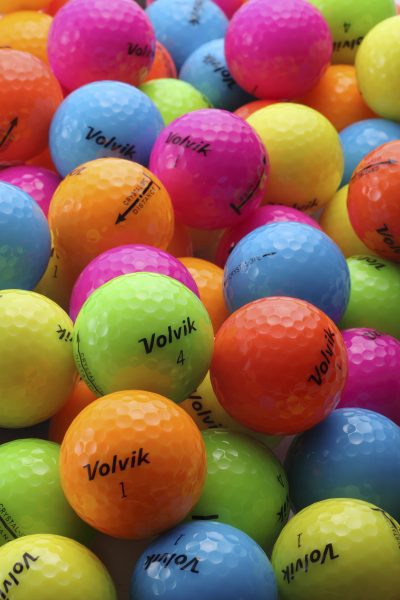
IG: With all of that in mind, what sort of ball should an A-grader, B-Grader and a C-Grader really be looking for in order to improve their game?
Bartels, Callaway: “My first suggestion for a beginner golfer is to consistently play the same golf ball type during your full round. Often I see new golfers find a ball in the trees and play it, not realizing that the performance may be much different from the ball they played on the previous hole. When they hit an errant shot, or try to get the ball to stop on the green, they may mistakenly feel it was their swing at fault, rather than the different ball type. As progressing golfers get a feel for what their main weakness is, I would encourage them to search for a ball that has the performance characteristics targeting that weakness. For example, a beginner usually slices the ball too much and rarely hits the centre of the face, so they would benefit from playing Supersoft since it has much lower spin (straighter shots, more distance) and feels better on mis-hits. For the advanced players, at some point their game will demand the greenside control and consistency that only a urethane cover can provide. That’s why nearly 100% of tour balls have this type of urethane cover. They’re likely to see a dramatic improvement in their scoring by switching to a premium ball, like our Chrome Soft.”
Ninomiya, Mizuno: “In general, A- graders need to use a Spin or Control ball, as an A-grader is more sensitive to spin and control than B and C- Graders . Thus, players of this level do not need a “distance” feature of a golf ball. B- graders should use a combination that suits their specific game and something that will add distance if they require it, or add spin and control if they require it. C-graders should look at a Distance ball, as these golfers usually need distance in their game.”
Kim, Volvik: “Well, C-graders are going to need to get that ball flying first and they will be losing their balls much faster than A-graders. This group should be looking for a ball that flies straight and has good distance but not at a high price level. I would say a two-piece or three-piece Surlyn ball would be their best option. In Volvik’s lineup, beginners should start with our DS55 or Crystal balls to get started. A-graders will know how to control their game and have a better idea of not losing balls on the course. They can use three-layered or four-layered urethanes to get more control around the green. Volvik’s S3 or S4 would be good options while Volvik Soft will also bring urethane quality to the field with your favourite colour added to it.”
Klatt, Seed: “It really depends on the golfer…what sort of performance they want and how much they’re willing to spend. From Seed’s point of view, we think that everyone would benefit from using a 3-piece Tour ball, particularly the average golfer, as the extra control and feel around the greens really helps to lower scores. We set our prices low so that everyone has the chance to use a Tour ball for just a few bucks and based on the feedback we’ve been getting, that seems to be working.”
Ohama, Srixon: “We recommend that every player chooses golf balls based on their playing styles (whether you prefer distance over control or vice versa), as well as feel, upward lift force and colour.”
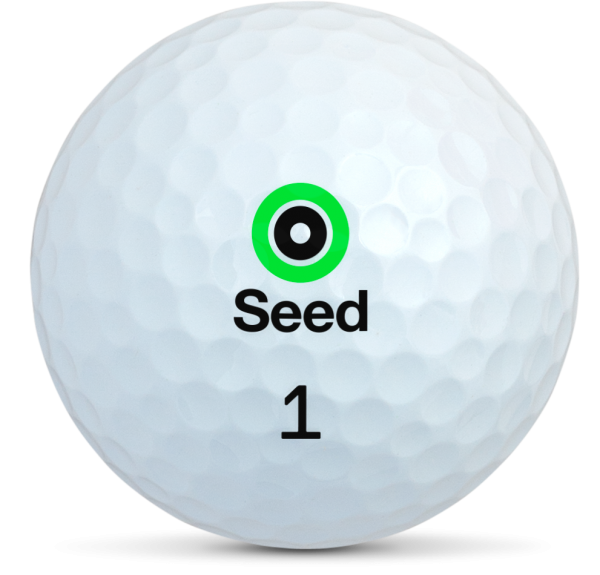
IG: With all of this technology, why can’t a manufacturer create a single ball that works for everyone? Or can they?
Bartels, Callaway: “The golf world has definitely been progressing down the path of customization over the past decade and the primary reason is that without changing your swing we can help achieve a more optimal ball/club combination that can literally add a full club or two of distance to your game. Philosophically, if we tried to design the same golf ball for everyone then to achieve true optimisation everyone would need to converge on the same type of swing (unlikely!). That being said, the common characteristics the majority of golfers need in a golf ball are faster speed, lower spin on full shots, more spin around the green, and better feel.”
Ninomiya, Mizuno: “Manufacturers cannot deliver one ball that will suit all, as all golfers are at different levels and require assistance from different aspects of golf balls. As a golfer improves their golf ball choice should change with this progression.”
Ohama, Srixon: “Each golfer has a unique swing form, physical strength, and playing style. Golfers’ preferences for feel and upward lift force of golf balls also vary. Because of this, it is unrealistic and almost impossible to make a single type of ball that works for everyone.”
Kim, Volvik: “Well, everybody has a different approach to the game. Some just started golf while others have been playing for more than 20 years. We just talked about the trend in “feel” and this would be another good reason why a single golf ball can’t fit all players. Everybody has a different swing speed, different ideas approaching the green, some like to hit straight, some to draw and fade. Some want distance while some want better control. That is why all manufactures have a diversified lineup of balls so consumers can choose by their preference.”
IG: What is different/better about the golf balls that your company manufactures, versus other brands? What excites you about the current line?
Ohama, Srixon: “Our top recommendations are Z-STAR and Z-STAR XV, which have won huge trust from tour players. Key technologies used in these products are ultra-thin urethane covers, SPIN SKIN technology, and the 338 Speed dimple pattern. Long distance, spin control, and good feel. Our golf balls deliver all of these types of performance and are trusted by amateur golfers, as well as tour players competing all over the world.”
Ninomiya, Mizuno: “Our current JPX S golf ball has 566 dimples on the ball (272 standard and 294 micro dimples) and this unique feature delays the descent of the golf ball. At impact the dimples have virtually no effect due to high ball and club speed, whereas when the ball commences its descent, and the ball speed starts to decrease, the micro dimples take effect and stall the ball, improving its descending angle, thus maintaining its flight improving the distance.”
Bartels, Callaway: “I’m very excited about the new Chrome Soft balls we introduced this year. The technology we packed into their construction has been overwhelmingly validated by player feedback. We brought a new material to the golf ball market called graphene that is one of the biggest material advancements in the past 20 years. This nano-material has numerous ground-breaking possibilities outside the world of golf, but in Chrome Soft we integrated it into our design to reinforce the outer core. This removed the barriers preventing us from designing a large, soft inner core with a large inner/outer core compression differential. Combined, they allow us to put our softest urethane on the cover, which creates extremely high spin around the green. It’s a unique design that integrates a high level of ball performance into a construction that still maintains its Soft Feel, which is a consistent trait across all our golf ball offerings.”
Klatt, Seed: “We only launched last year, but the fact that golfers are taking to our ‘same performance, half the price’ story and really liking the performance of the new Seeds is very satisfying. We’re doing what a lot of people thought was impossible only a few years ago, so it’s nice to get that validation and see golfers taking to our vision of the future.”
Kim, Volvik: “Volvik is one of the first pioneers in introducing the matte-finished (i.e. not glossed) coloured balls to consumers. The ball has received great response from the market around the world. By this trend, we see many second-runners coming up with a similar ball and during this time, we have already launched the Volvik Lite and Volvik Soft matte finished golf balls. Volvik Lite coloured balls have a different look compared to our original Volvik Vivid balls as they have a lighter colour on them but can be seen much better during its flight compared to a normal matte-finished golf ball. Volvik VividSoft is another achievement we’ve made that has a totally different colour scheme compared to the original Vivid balls, while the ball brings a much softer feel as well.”
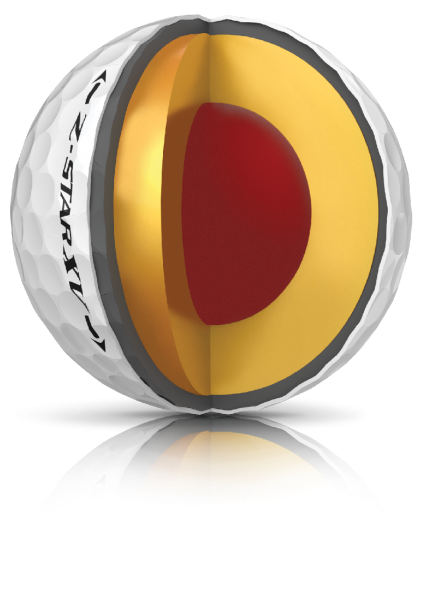
IG: In general terms, what do you believe is the future of golf ball technology? Can the golf ball really get any longer/better?
Bartels, Callaway: “I think we’ll continue to see material advancements that will also require complementary manufacturing advancements. We’ll continue to push the limits of aerodynamic development to add more distance for all golfers. And of course, as ball fitting tools become more advanced it will become easier for the average golfer to find the ball best suited for their game. Regarding the distance of golf balls, I still think the overwhelming majority of golfers would say they don’t hit the ball far enough, so as long as they’re seeking more distance in their golf ball we’re going to be designing new balls that meet that demand!”
Ninomiya, Mizuno: “The future is in new materials. Some exciting things to happen in the future around golf ball design will be 3D CAD design combined with Computer simulation. Right now the advancement at Mizuno has been in dimple technology and this has become very rapid over the recent times. Advancement is also being made whereby a golfer’s fitting data (for irons and woods) and original ball information can be used to recommend the best ball to deliver the best results for golfers of all levels.”
Klatt, Seed: “We’re definitely at the edge of what is theoretically possible as far as performance goes. The golf ball is actually one of the most heavily-regulated pieces of equipment in the bag. Size, weight, shape, symmetry, initial launch velocity (ball speed) and total distance are all regulated. Even if there’s some ‘magic’ material or design out there, those regulations mean it’s difficult to produce anything other than a slight improvement. We’ve actually designed a ball here that’s about 20% longer, but haven’t released it, as it’d be non-conforming.”
Ohama, Srixon: “We expect that new performance requirements will emerge, in addition to the traditional ones such as distance and spin control for a short game, as golfers of all types continue to enjoy playing and creating new golfing scenes. There is still room for us to develop new material for layers, design new dimple patterns, and advance manufacturing technology to fulfil the new requirements.”
Kim, Volvik: “Including Volvik, all manufacturers continue to try finding a new material that will take the place of urethane golf balls. During the Surlyn era, nobody thought that there could be a better cover solution than the Surlyn golf ball but we were wrong. Engineers, research labs and even NASA continue their development in golf balls today and, yes, new innovations in dimple designs, layers, etc., can bring an opportunity of improving golf ball performance.”
IG: What do you think about the current controversy surrounding the “rolling back” of the ball? Is it appropriate? Is the ball to blame? Should there be bifurcation between pros and amateurs regarding the ball?
Bartels, Callaway: “Personally, I believe the USGA has done a great job limiting the distance of the golf ball for the elite players by instituting their ODS (Overall Distance Standard) test many years ago. The test is essentially performed at a 120 mph driver head speed condition that targets exactly the type of player that is in the cross-hairs of this controversy. As a result of that test, the firm distance balls of the past decade really haven’t gotten that much farther for those types of players. We certainly have designed better golf balls in the past decade, but recent innovations have enabled similar maximum distance but with a new, soft feel and ‘through-the-bag’ spin performance that optimises the ball for all parts of a player’s game. So in that sense I don’t think the ball is to “blame” for the extremely long driving distance seen on Tour. However, it’s undeniable that golfer fitness has improved dramatically in the past 20 years, and the proliferation of measurement devices (like Trackman, GC-Quad, etc.) have given better golfers the ability to gain more distance through customised fitting. Those two factors alone seem to be the biggest reason for the distance gains. So where the golf ball is not to blame, it’s logical that restricting the golf ball would be the easiest way to ‘fix’ the perceived problem (if you agree that it needs to be fixed). Personally, I’m more of a traditionalist and love the ability to play the same equipment and golf course that Phil Mickelson plays, and use the current handicapping system to directly compare my result to his. I think that is what makes golf unique to other sports and why we should make every attempt to maintain that distinction.
Ohama, Srixon: “To limit distance could have a negative effect on amateur golfers. They may lose interest in golf. Most amateur players, unlike tour pros, don’t seem to think that today’s golf courses fall behind the evolution of long-distance balls. They are still keen on hitting balls farther, therefore, a new rule limiting distance must not be adopted. We think it would be reasonable to apply different rules for competitive golfers and tour pros. Golf balls are not the only case.”
Klatt, Seed: “The ball has not suddenly gained 50 yards in length, and it’s certainly not the sole cause of the current distance gains we see on Tour. Modern tour pros are now athletes, and they are not playing the same game as you or I (or Jack or even Tiger for that matter). Rolling back the ball is a backward step for everyone, particularly for the average golfer and doesn’t address the other factors creating length. Improved fitness, improved ‘golf’ strength, improved technique, launch monitors linked to custom fitting and dialling in those technology improvements all combine to give us a 400 yard Dustin Johnson drive. He’ll still be significantly longer than anyone else with a ‘rolled back’ ball and the game just gets harder for the average guy. It’s a bit like saying we need to do something about the tennis ball because John Isner can serve at 250kmh… that’s not representative of the entire game and hasn’t stopped Roger Federer from regaining #1. There’s more to the game of golf than just pure distance, and there are other ways they could address this at the pro level if they really wanted to.
“Bifurcation is an interesting one, and would seem to make sense, but I think one of the great things about golf (and the handicap system) is we all play the same game. By that I mean any golfer, if they can afford to, can play the same courses as the pros, use more or less the same equipment and the handicap gives us some idea of how we’re going in relation to that. So I reckon that enhances the individual competition aspect of the game, and gives us all an idea of just how good those guys really are. And even if we only hit that one perfect shot a round, we all get to delude ourselves a little and think ‘if I just practiced a little more…”. While moving to different rules may solve the perceived ‘distance’ problem on Tour, I would worry that the game for the other 98% of us would lose something essential to its appeal because of that.”
Share your thoughts with us!
What do you think about current golf ball technology? What about the distance debate? Do you have any questions that you’d like us to ask any of these experts? Simply visit www.insidegolf.com.au and comment on this story, or visit our Facebook page: www.facebook.com/insidegolf
Note: Titleist was contacted and invited to contribute to this story, but declined to participate.
The golf ball
by Bernard Darwin
From the book ‘British Golf’, published by Adprint Limited London in 1947
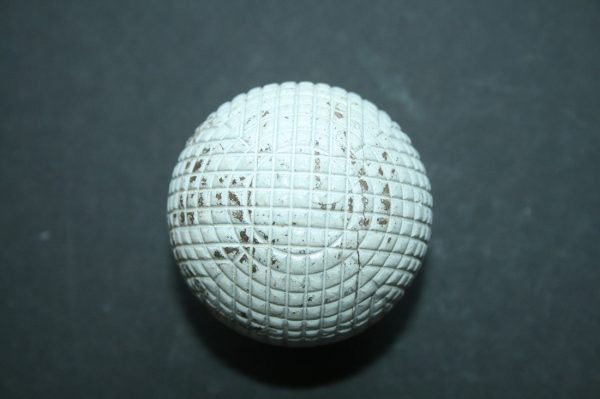
Here are at least two dates for every earnest student to remember since each marks the beginning of an epoch. They are 1848 and 1902. For untold years before 1848 the golf ball had been made of feathers rightly stuffed into a leather cover. We know on the authority of old Tom Morris that these balls ‘could play fine afore the wind’ but they were very apt to open at the seams, particularly in wet weather, and then they were useless. They cost half a crown or at least two shillings and must have been an expensive luxury for players of limited means. In 1848 a new star arose to lighten golfers’ darkness, the star of gutta-percha. From that moment the feathery was doomed.
That was unquestionably a revolution but there was still a greater one in 1902, when the gutty was hurled from the throne it had held unchallenged for hard on fifty-four years by the rubber-cored Haskell from America. Never was there an overthrow more sudden and complete and how quickly it came.
It is possible to say, not without reason, that some of the glory of golf departed forever with the gutty ball. But it is not possible honestly to deny that the rubber-core was, through its resilient quality, a pleasanter ball to play with and this not merely because it was less exacting in point of accuracy and more merciful to the half-hit shot. The sensation of first hitting one and the sweetness with which it flew away can never fade wholly from my mind. It was perhaps a pity that the ball was ever invented but, save in the minds of a few die-hards, there never could be any question of going back. Beyond all doubt the Haskell made the game more enjoyable for the great mass of players.
I think it may be said, through the statement is a controversial one that in the first few years of its existence the ball gave much innocent pleasure without irretrievably hurting the game. Scores grew lower but there is not necessarily any harm in that; the ball went farther but not far enough to make fools of the courses by rendering negligible many of their natural features. It was rather when golf began again after the 1914 war that the harm became apparent. The ball-makers concentrated more and more on one point, power; the new smaller and heavier ball they produced bored its way too easily through the wind and went too far. In particular some devil within its jerkin was so amenable to hard hitting that the difference between the medium and the long driver was vastly emphasised and the long hitter became so long that there remained for him hardly such a thing as a good two-shot hole. As far as he was concerned the brassy was atrophied and he reached every hole with a drive and a shot with some lofted iron. More and more lengthening, more and more space and so more and more money was wanted and even so the balance of the game was gravely impaired.
There was no hope of reform as far as the man in the street was concerned, for he thought only of the length of his own drive. At last, however, the authoritative bodies all over the world were canvassed; their verdict was in favour of a reduction of power and the matter would have been considered at St Andrews in September 1939 but for the war. Six years passed and with the gradual renascence after the war came the obvious time for doing something. What it may be is not yet known and as I write the decision has yet again been postponed, this time for three years. That the ultimate reform, if there be one, will not be alarmingly revolutionary I can prophesy. That it will restore something of the lost balance of the game, and in particular the old glories of the second shot, I can only and most profoundly hope.
Transcribed by Australian golf historian Andrew Crockett, the author of ‘Bump & Run ; At The Feet Of The Masters.




![Win the golfing experience of a lifetime, at the Hawai‘i International Week of Golf, valued at $6,900 [Winner Announced] Win the golfing experience of a lifetime, at the Hawai‘i International Week of Golf, valued at $6,900 [Winner Announced]](https://www.insidegolf.com.au/wp-content/uploads/Hawaii-Comp-500x294.jpg)